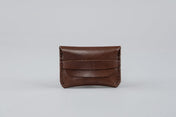For runners of all abilities, shoes are a necessary accessory. They offer stability, support, and cushioning, as well as the potential to reduce accidents and boost performance. Running shoes must be replaced eventually since they wear out like all shoes do. Here's how to determine when to buy new running shoes.
The Lifespan of Running Shoes
Several variables, including the style of shoe, how frequently and intensely it is used, and the runner's weight and motion, affect how long running shoes last. Running shoes typically last between 300 and 500 kilometres on average.
It's crucial to remember that this is only a ballpark figure. While certain shoes may last longer than others, some may degrade more quickly. It's also important to keep in mind that shoes might deteriorate with time even if they haven't been worn much.
Signs That Your Running Shoes Need to Be Replaced
There are a number of indications that you might want to get new running shoes, including:
- Visible Wear and Tear
Visible wear and tear is among the most evident indicators that it's time to change your running shoes. Instances of this include frayed laces, worn-out soles, and holes or tears in the upper.
- Decreased Cushioning and Support
A decline in cushioning and support is another indication that it's time to get new running shoes. It might be time for a new pair of shoes if your old ones don't feel as comfy anymore or if your foot or leg pain is worse than usual.
- Changes in Your Gait
Your gait or running form may have changed, which could indicate that your shoes are no longer giving you the support and stability you require. A propensity for rolling your ankles, a rise in blisters, or other foot ailments are a few examples of this.
- Excessive Moisture or Odor
Your running shoes may no longer be able to adequately wick away perspiration and moisture if they are overly odorous or damp. This could make other foot issues, such infections, more likely.
Handmade Shoes
Consider purchasing a pair of handcrafted shoes if you're in the market for new running shoes. Handmade shoes are frequently of superior quality than mass-produced shoes since they are typically created by skilled artisans utilizing traditional methods.
The attention to detail in handmade shoes is one of their key benefits. They frequently use better-quality materials and have elaborate embellishments and detailing that are not seen in shoes that are mass-produced.
Oftentimes, wearing handmade shoes is more comfortable than wearing shoes that were mass-produced. They are frequently designed with a footbed that is more supportive and a sole that is more flexible, allowing for prolonged wear without discomfort.
Conclusion
In conclusion, it's critical to know when to switch out your running shoes for optimum performance and injury avoidance. Keep an eye out for deterioration, diminished cushioning and support, changes in your gait, and an abundance of odor or dampness. If your shoes do need to be replaced, think about spending your money on a pair of finely crafted shoes that will provide superior comfort, support, and attention to detail. You can continue to enjoy running for years to come if you wear the correct shoes.




